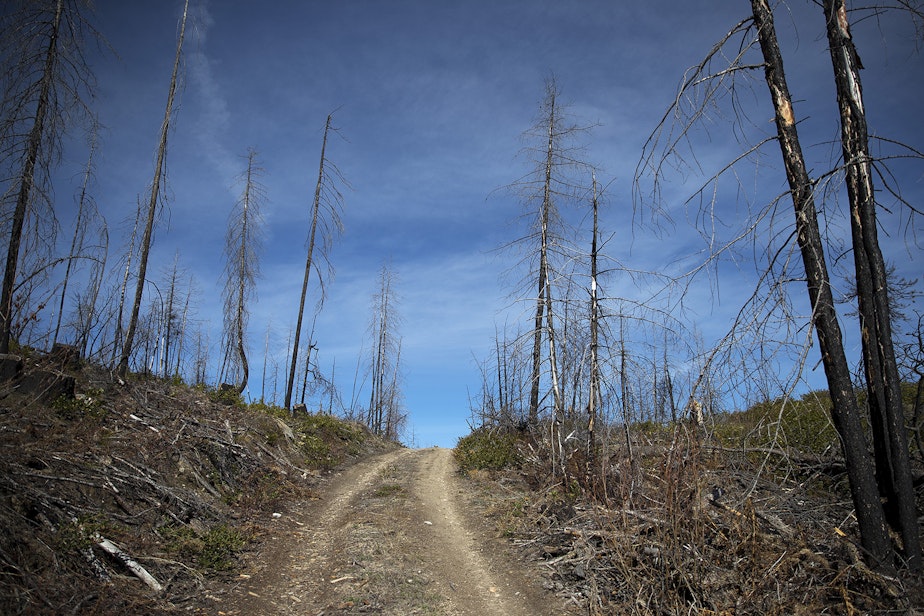Snow melts, anxiety rises: Wildfire season is here
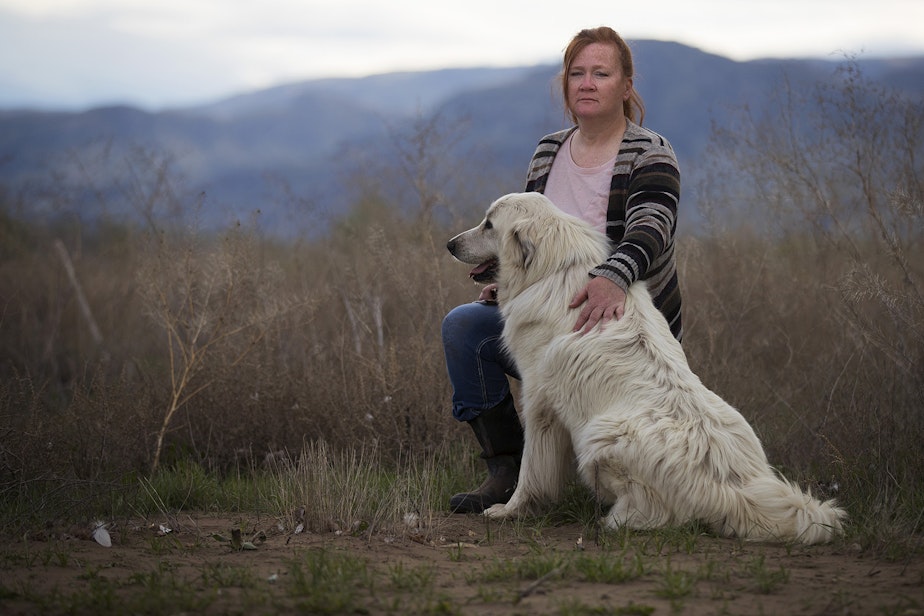
Dry conditions this spring have put many people in north central Washington on edge.
As wildfires become more frequent and intense, the disappearance of snow now ushers in a season of higher anxiety for those who have experienced the destruction of wildfire. And this spring feels particularly ominous, with water levels in ponds and lakes already exposing bathtub rings of pale earth that wouldn’t normally be visible until the end of the dry summer months.
Christina Cline, a horsewoman from Carlton, Washington, sees evidence of the looming drought on her rides.
“I ride this loop a few times a week and there is always water in this pond,” Cline, 49, said atop her arab gelding, Wolf. Her property is less than a mile from where the Carlton Complex fire, the largest in state history, claimed two lives and 500 structures in 2014.
“This pond is bone dry. I’ve never seen it like this before.”
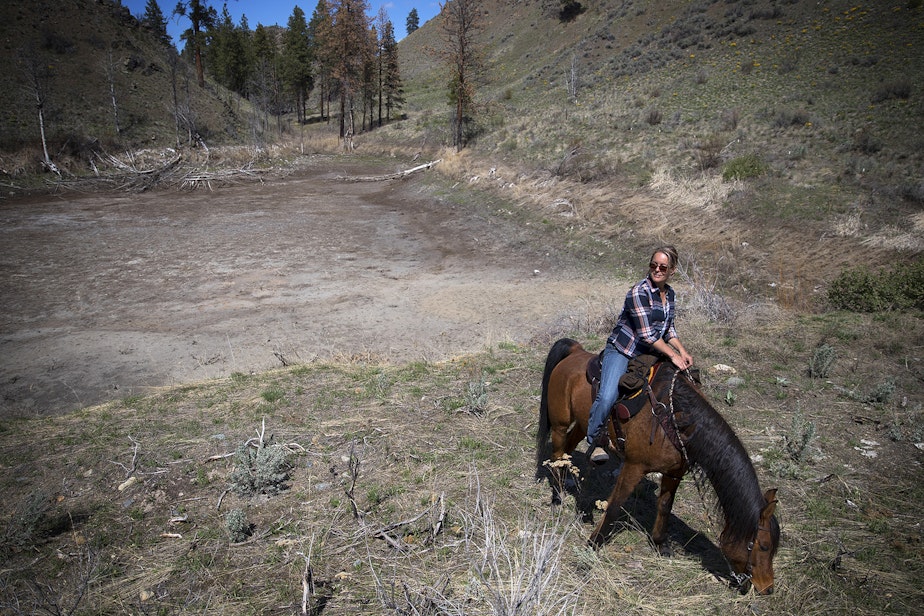
Sponsored
A half hour away, on the outskirts of Winthrop, Barbara Kaley, 62, looks out at her dry garden, “This is a low point in the landscape that is usually under a foot or so of water this time of year. That hasn’t happened this year.”
Pete Creek, which runs along the edge of Kaley’s property, is a seasonal creek that has only run dry twice in the 15 years Kaley has lived here.
“I’m betting we’ll be out of water before July unless something changes,” she said, pursing her lips. “It’s very much like PTSD” — post-traumatic stress disorder. “You’re just waiting,” she said.
So far this spring, things are looking dryer than 2015, a year of severe drought across Washington. Governor Jay Inslee has already declared a drought emergency for the Methow and Okanogan river basins. Snowpack levels for those watersheds are roughly two-thirds of normal and water managers predict flows of less than three-quarters of average for the summer season.
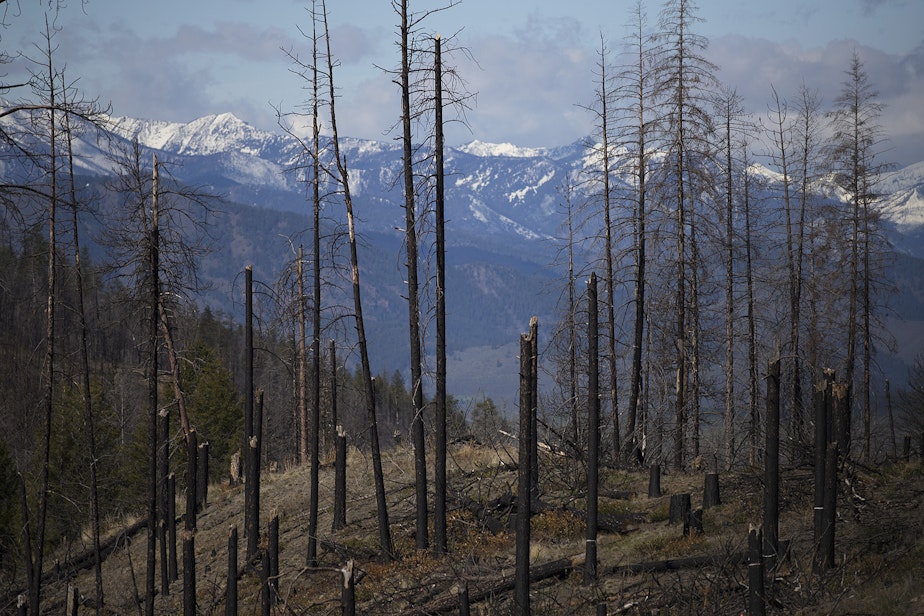
O
ver in Okanogan, Elise Walker, a moderator of a Facebook group called “Okanogan County and Methow Valley Topics of Interest and News,” said it’s clear that many of her members struggle with anxiety and are triggered at the slightest hint of smoke or fire truck action.
“Ding!” goes Walker’s phone as another Facebook notification pops up from the group. Walker formed the group soon after the Carlton Complex fire. It now has more than 9,000 members and features local news and tips for fire-proofing property right alongside play-by-play updates on active wildfire response efforts. Traffic in the group doubles during wildfire season.

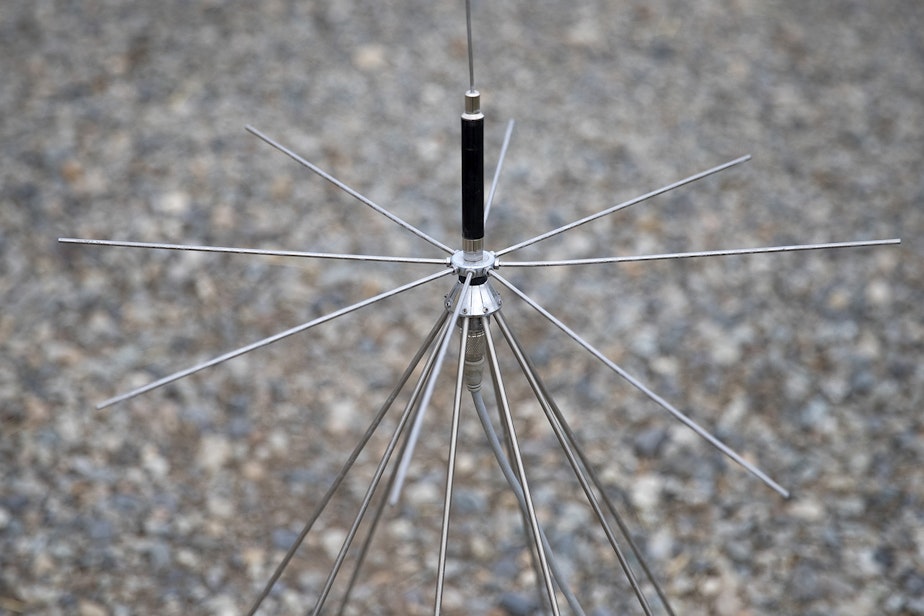
“If we don’t post about something we’ll get people posting: ‘Where is the fire?! Why are the sirens going off?!" she said. "'Where were the trucks going in Winthrop at full speed?!’ They’re so absorbed during fire season that they can’t stop themselves. And it’s mostly people who have lost everything. It’s a big deal."
Walker believes one of the biggest sources of anxiety in the community is a lack of real-time information as a fire is burning. After the Carlton Complex fire, she took it upon herself to solve that problem. At her home she has three radio scanners and multiple antennas that allow her to listen to law enforcement and emergency responders across all the surrounding counties.
The scanners are on all night, blaring through her house. She says it’s like being the mother of a newborn.
“Every sound you hear goes on without you and soon as you hear the baby whimper you’re like, wide awake. That’s how it is for me [with the scanners]. The conversations are nothing until I hear a single way they speak or a word or the tones and I’m like, BING, wide awake and I can hear it and I’ll listen.”
And then she’ll update the Facebook group. Members chime in with what they are seeing and share maps and photos.
Walker said it is never about fear mongering or inducing anxiety. It’s about getting immediate information to as many people as she can. Managing the Facebook group, for her, is a form of self care during a period of the year that has become very stressful.
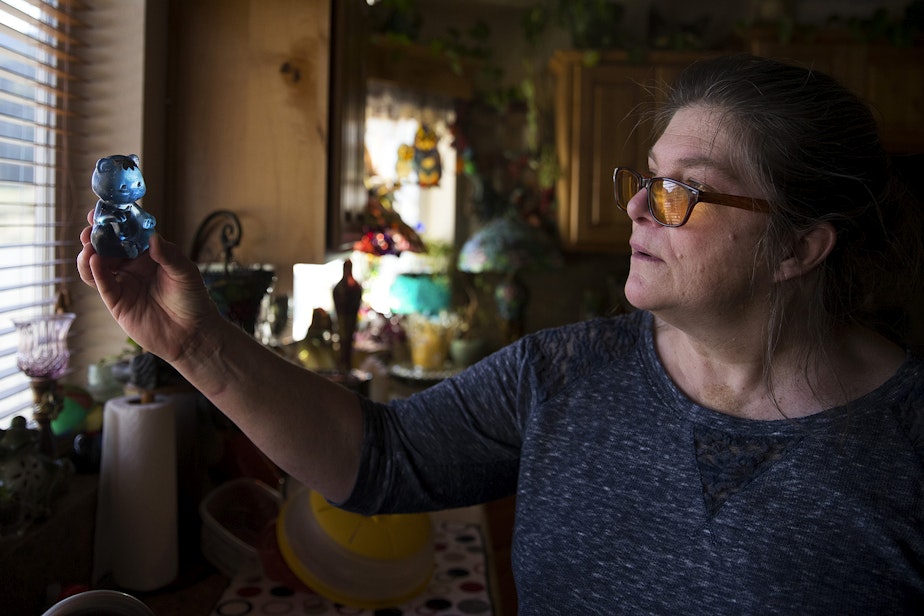
Sponsored
D
agmar Devere scrolls through her Facebook feed in the kitchen of her double wide mobile home. She is a member of Elise Walker’s Facebook group and posts frequently in all capital letters.
“I really wasn’t an internet type person before the fire,” Devere said, pushing her long gray hair away from her face. Devere worked as a traffic control supervisor on road construction and didn’t have much use for computers. “In 2015 that changed.”
Devere and her husband Warren lost their home in the Carlton Complex fire, only narrowly escaping, themselves.
After the fire, Devere stopped attending social gatherings and had suicidal thoughts. She couldn’t bring herself to return to the burned remains of her home for many months. She said the only way she can stay sane and still live here is with the constant Facebook group updates and wildfire information that she gathers online.
Sponsored
Shopping websites like ebay and Craigslist also helped her recovery. Her mobile home is filled with close to 200 imitation Tiffany lamps, clawfoot furniture and shelves of stuffed animals — purchased online to replace the items she lost in the fire.
Wildfire season is now a time of high anxiety for Devere. She sleeps little and spends hours online. Seeing or smelling smoke triggers her, until she gets the information she needs to understand what is going on and if there is any danger.
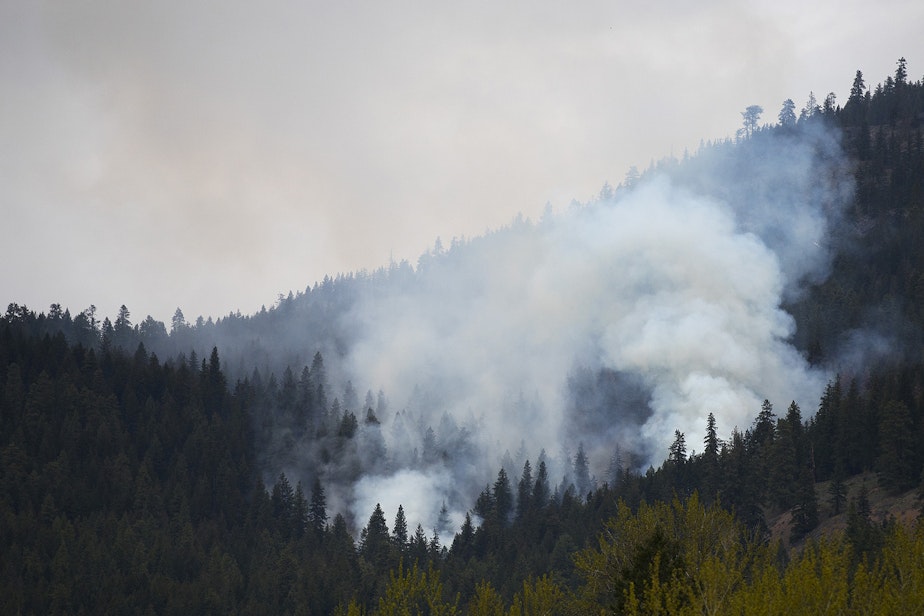
A year or so after the fire she and her husband were in nearby Wenatchee when the wind picked up and Devere thought she saw a plume of smoke on the horizon, near her home.
“I absolutely lost it,” Devere said. “Hopped back in the car, from wherever I was at, and I’m hauling butt down 97 to get home, as fast as I can, passing people, trembling, can’t breathe, crying, speeding, almost got in several wrecks because I was going into oncoming traffic around other people who were going way too slow.”
She was in such a panic that she forgot about her husband, who was at a work training in Wenatchee.
Warren called her on her cell phone when she was almost home. “He was so upset he couldn’t see straight. We laugh about it now but I tell you what.”
That smoke plume Devere thought she saw? It was thunder cloud.
Devere saw a therapist for a short time, but when the therapist relocated she couldn’t afford the longer drive to continue treatment. During fire season she keeps her house surrounded with hoses and sprinklers at the ready.
A few years ago, her lawyer and friend, Alex Thomason, bought a fire truck she named Clifford, which is parked and full of water on the Devere’s property. Warren has a commercial driver’s license and uses the truck to respond to local fires, which gives Dagmar some peace of mind.
She said her mental health has improved with each passing year since the Carlton Complex fire, but that she’ll never forget the trauma and loss she experienced — and the anger and grief that followed.
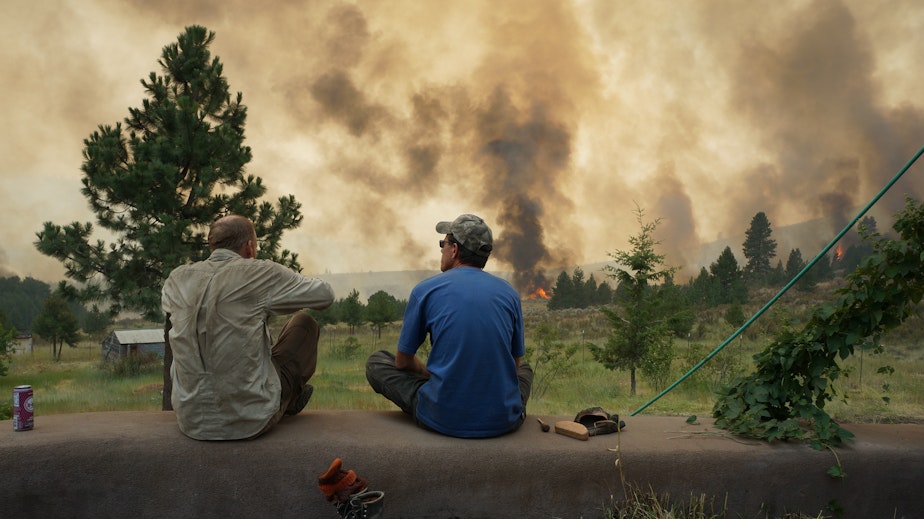
T
he Carlton Complex fire started 10 minutes walk from Anthony “Twig” Wheeler’s off-grid earthship home outside of Carlton, Washington. Wheeler stayed to protect his property and “usher” the fire around the perimeter. For three days he watched as the fire burned everything in site. His home was spared.
“I was told if the wind shifted, it could be here in 10 minutes so I set a timer on my watch and anytime that I went to sleep, I’d set the clock for 10 minutes and wake up to look,” Wheeler said. “I put up plastic flags or ribbons around my home. So I’d wake up and look where the wind was.”
Wheeler is a counselor who specializes in trauma. After the fire, he wanted to help people cope with the emotional burden of the experience. He made a podcast called the Stressless Series for Wildfires, which aired on the local radio station.
Our modern lives are full of stress triggers, Wheeler said. Be it news headlines in our social media feeds or the clamor of loud, urban environments. We are conditioned to pay attention to signals of danger, but often those perceived threats are not immediate.
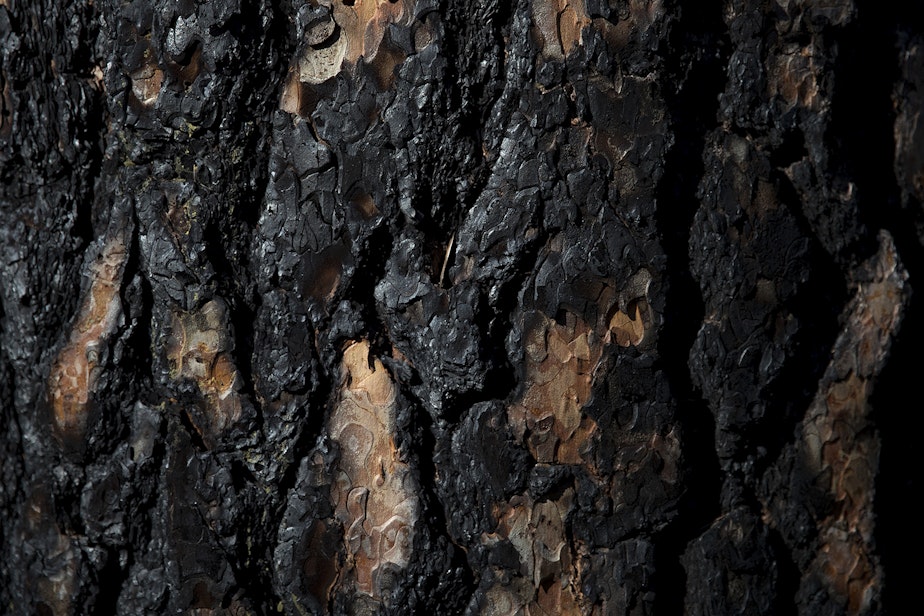
Our bodies kick into a “fight or flight” stress response when we are presented with an upsetting news story, for example, even though there is nothing we can do to alleviate that threat.
“The danger signal is naturally attractive,” Wheeler said. “If you didn’t pay attention to a signal of danger, it could do you harm,” Wheeler said.
But much of that danger signal can also do harm. The same could be said of constantly monitoring wildfire news. It’s important to stay informed and to prepare your property for wildfire season, but being constantly inundated with fire updates, especially if they are not in your immediate vicinity, can raise stress levels unnecessarily, and create a self-perpetuating cycle of anxiety.
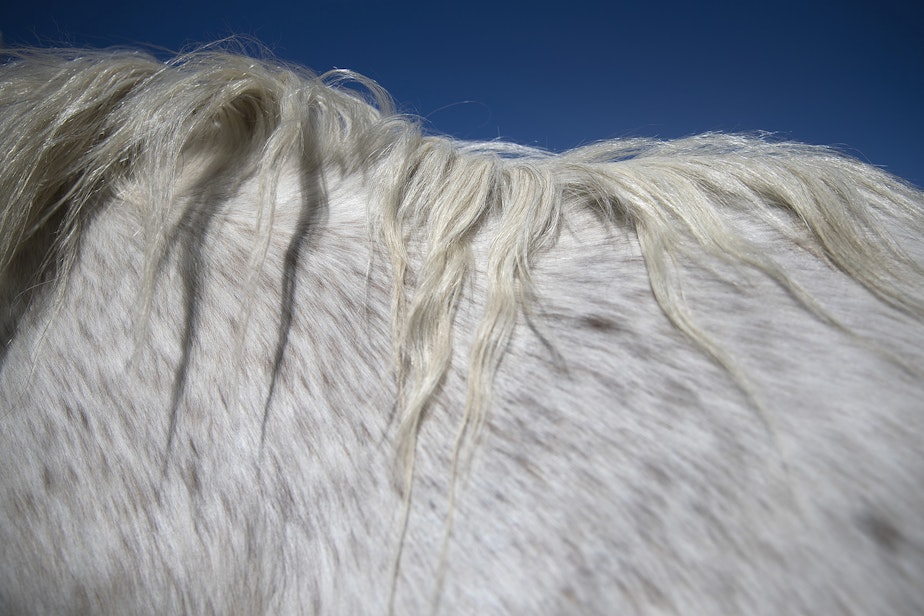
“There’s this kind of danger in being exposed to, and exposing yourself to the signal of danger when you don’t feel empowered to respond to it,” Wheeler said.
Over a prolonged wildfire season, when people are often trapped indoors for weeks because of unhealthy air quality, and anxious about their safety and the safety of their property, the tendency can be to turn inward in self-induced isolation, Wheeler said.
As the stress response goes on for an extended period of time, many people spend more time online, anxiously watching for updates, and less time in community with friends and loved ones.
“A more healthful answer would be to create intentional prosocial situations that are meant to signal safety to people who are not actively in danger,” Wheeler said.
Wheeler said that during wildfire season it’s important to prepare your property, monitor the available information about your immediate risk level, but remember to get out and cut loose now and again. Socializing is like a “stand down” signal for your stressed out nervous system.
“That is very much a deactivation signal that needs to be inserted in all these communities that are, I know it’s crazy to say, having natural disasters,” Wheeler said.
“It’s actually very important to bring people together to try to have a good time in the midst of the dangers.”
